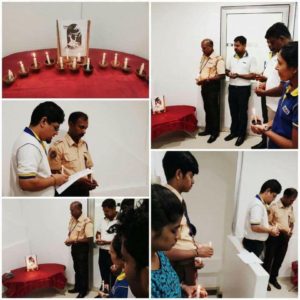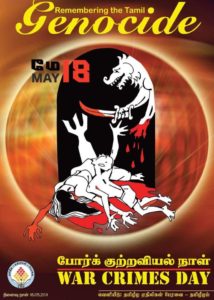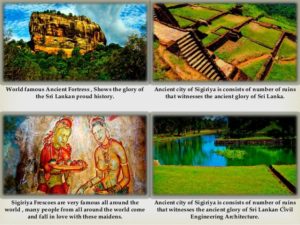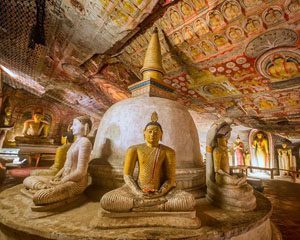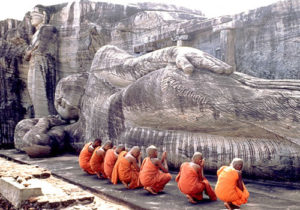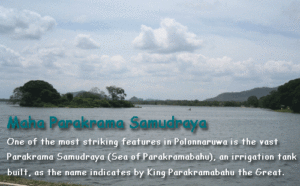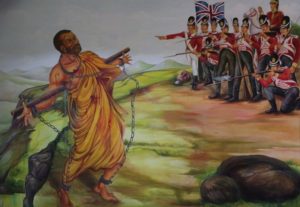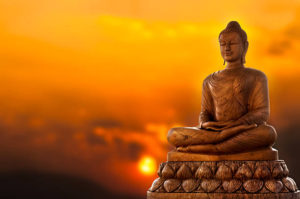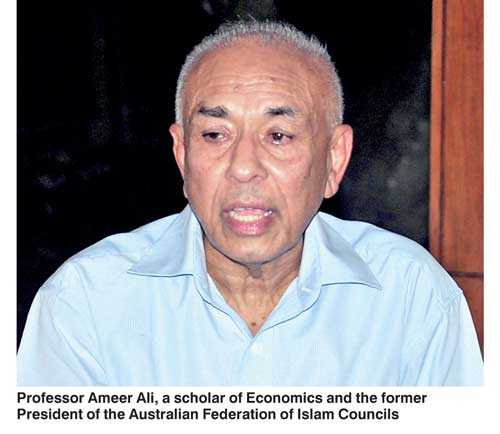Exposing fake witnesses in Iraq & Sri Lanka: Nayirah & Vany Kumar
The intervention in Syria has become an eye opener as a string of lies, fake videos, images, recruitment of child artists & PR firms have exposed the lies that have gone into justifying military intervention by the West & UN action thereafter. A girl crying before Congress claiming she witnesses Iraqi soldiers remove babies from incubators justified the invasion of Iraq. Channel 4’s star witness was Vany Kumar who had arrived from London to the Vanni and her accounts of blood being mixed with water & given to dying Tamil civilians together with a series of documentaries titled Killing Fields” led to successive UNHRC Resolutions against Sri Lanka. We will now examine these two accounts to showcase how & what has gone into fooling all of us.
This is Nayirah. It was not her real name. Her real name was hidden to protect her from the ‘Iraqis’.
In 1990, she was a 15 year old girl who was one of the many who testified before US Congress. She described with tears how Iraqi soldiers removed babies from the incubators & killed them at the Al-Addan hospital. “While I was there, I saw the Iraqi soldiers come into the hospital with guns, and go into the room where … babies were in incubators. They took the babies out of the incubators, took the incubators, and left the babies on the cold floor to die.” Her witness accounts were so vivid it moved those present to tears. Her incubator story was repeated no less than 7 times by the US President George Bush Senior himself. Her story may not have been the only justification to invade Iraq but it definitely steered US sentiments to facilitate it. Even Amnesty International quoted her testimony claiming 312 dead babies and later was forced to retract it. However, there were no other witnesses to support her story, not even the doctors who were present on that day at the hospital.
What the world did not know was that Nayirah was not her real name.
She was Nijirah Al-Sabah, the daughter of Saud Bin Nasir Al-Sabah, the Kuwait ambassador to the US & Canada & a member of the Kuwait Royal Family & she had been trained to cry & give falsified evidence by US PR firm Hill & Knowlton. The firm distributed her testimony. The politicians used the story to manipulate the public and the mainstream media helped spread & reinforce the lie. The killing babies story worked in World War 1 when the British accused Germans. H&K vice-president Lauri Fitz-Pegado had coached Nayirah
When ‘Nayirah’s father was questioned. This was his reply “If I wanted to lie, or if we wanted to lie, if we wanted to exaggerate, I wouldn’t use my daughter to do so. I could easily buy other people to do it.“
— Saud Nasir al-Sabah, Kuwait’s Ambassador to the United States and Canada. He was also related to the Kuwait Royal family. ‘Nayirah’ & family were living in the US.
On 2nd August 1990 – Iraqi troops under orders of Iraqi President Saddam Hussein invaded Kuwait.
When Saddam was a ‘friend’ of the US between 1980-1988 and helped kill about 150,000 Iranians the US, the world, the UN or media were not concerned about human rights. Now that Saddam was no longer an ally of the US & he had done the unpardonable act of invading a country that had oil, the US decided to take action.
According to US Congressman Jimmy Hayes of Louisiana, the Kuwait government had hired 20 PR, law & lobby firms to mobilize US opinion & force against Saddam & Iraq. Some of these included Rendon Group, Neill & Co(to ($50,000 p.m. to lobby Congress) Hill & Knowlton who claimed to be representing Citizens for a Free Kuwait” a front created to hide the real role of the Kuwait Government which had paid $11.9m through the front.
The head of Hill & Knowlton (Craig Fuller) was Chief of Staff when George Bush was Vice President. The devices & techniques used (press conferences showing torture, ‘Free Kuwait” t-shirts, bumper stickers at college campuses, releasing ‘hostage’ letters, radio shows, publication of books Rape of Kuwait” ) by Hill & Knowlton in the 1990s to steer US public sentiment should make everyone wonder at the methodologies now being used. Wirthlin Group, a unit within the Hill & Knowlton carried out daily opinion polls to test the pulse of the people. Wirthlin’s job was to project Saddam as a madman, committing atrocities even against his own people and the US needed to stop him. On September 23, 1990, Hill & Knowlton used its links to evangelical mega-churches to organize a National Day of Prayer for the Kuwaiti people. H&K launched a yellow ribbon campaign to support US invasion. That Iraq was about to strike Saudi Arabia was another PR lie. However, the world may have been fooled but one man wasn’t – John MacArthur, author of ‘The Second Front’ depicting the manipulation of news media during the Gulf War began to doubt the incubator story and soon the whole world came to know it was a paid lie. How happy is Nayirah at what her sobs have done to a country 28 years later?
Here are some videos to understand those that aided, abetted & paid to lie to invade Iraq
Persian Gulf War: Kuwait Incubator Baby Hoax with Tom Lantos and Nayirah – https://www.youtube.com/watch?v=Wi6J-pYWqc4
60 Minutes ‘Nayirah’ Part 1 – https://www.youtube.com/watch?v=e_JfqkEXdAg
To sell a war – Gulf War propaganda – https://www.youtube.com/watch?v=yaR1YBR5g6U&t=63s
This is Vany Kumar
She was presented by UK Channel 4 documentary Killing Fields” as a Star Witness. She has 4 names – Dr. Tamilvani, Damilvany Kumar, Damilvany Gnanakumar & Vany Kumar. C4 screened her 10 times. She was described as a young English Tamil woman who had left London to spend 6 months with relatives in Sri Lanka”…”founder herself caught up with tens of thousands of displaced Tamil civilians on the exodus eastwards”. The UK Guardian reported that she came to Sri Lanka on 28 February 2009 for the 1st time since moving to UK in 1994 & headed for the Vanni. C4 also says she had not disclosed her whereabouts even to close relatives & it is odd that the first call she made from Sri Lanka was to British media & not to her family.
Like Nayirah who had witnessed Iraqi soldiers putting babies out of incubators, Vany Kumar claims to have watched a 6 year old boy have his leg amputated without anesthetics, then she contradicted herself by claiming blood with mixed with water. She also claimed she saw hospital staff filter blood coming out of patients through a cloth before feeding it back into their veins. You don’t have to be a doctor know that blood cannot be mixed with water & given to patients! Her lies were exposed by Dr. Shanmugarajah (whom she was assisting) in his affidavit we did not conduct any sort of surgery without giving anesthesia”.
She turned out to be a member of the LTTE front the Tamil Youth Organization that was declared a LTTE front by the GOSL in 2014. She is alleged to have arrived in Sri Lanka & made contact with LTTE’s Castro & had undergone military training under Durga, female LTTE leader of Sodiya regiment. She had functioned as translator for LTTE propaganda/media. She denies LTTE abused children then why should UNSG & foreign envoys appeal to the LTTE to release civilians & not use them as hostages, human shields & conscript them as combatants? She says LTTE don’t want to kill their own people, they were fighting for them, they worked so hard to save their people”.. and she even declares the people chose to stay”
The UK Guardian declares she provided running commentary to the outside world from behind the lines”. On 30 May 2009 days after the military defeat of the LTTE the Guardian published an article titled Call to free British medic held in Sri Lanka war zone”. Now Vany Kumar had become a British woman” interned in one of the islands’ detention camps” – if so how did she make contact with others? Then began a global campaign to project her as helping the wounded in a hospital & the British Foreign Office demanded her release. From there onwards from 8000 dead, jumped to double figures 16,000, 40,000 & 150,000 & now 200,000!
How can a member of the proscribed LTTE become a witness” under UNRC witness protection act” & given 20 years. Amnesty International & many other human rights organizations including the UN quoted her extensively too! Lord Naseby says C4 witnesses are paid members of LTTE http://www.adaderana.lk/news.php?nid=25901&mode=beauti
Vany Kumar, 25… in a telephone interview with the Guardian, she describes life on the front line. (how did Vany Kumar have access to dial UK from the Vanni?)
· The most terrible thing that I have seen was when a mother had a bullet go through her breast and she was dead and the baby was still on the other side of the breast and the baby was drinking her milk, and that really affected me. I was at that place where it happened. (given Vany’s association with LTTE does this single statement depict the travesty of justice and how media has contributed to blurring civilians from LTTE)
· [The shelling] is definitely coming from the government side, that can be sure, because it is only a small area on the LTTE side and from the sound and from the distance I can surely say it is from the government side.” (a giveaway – an LTTE ‘civilian’ pinning the blame on the GOSL)
· I just want my sister back with me as soon as possible. My mum is crying and we need her back. We didn’t have anything to do with the war.” (why didn’t she tell her family she was coming to Vanni)
· Both parties have got to have a ceasefire. I think the international [community] has to either come into the country or get both parties to stop the fighting and start thinking about the civilians living here. Every single person living here asks why the international [community] is not doing anything.”(did she not say in the C4 interview that civilians were staying with the LTTE voluntarily and that the LTTE was not keeping them by force?)
On 1st June 2009, Murali Reddy an embedded Indian journalist wrote to The Hindu ‘Mystery shrouds presence of British woman in tiger territory’. Reddy refers to Vany Kumar as Damilvany Gnanakumar and asks a very simple question. How did she land in the island nation and how did she stay on in the tiger-controlled territory for nearly 15months?
Nayirah was no victim, she was coached. Vany Kumar was no civilian but a member of a LTTE front.
$12million was paid to Hill & Knowlton PR firm to mastermind & set the stage for the the Gulf War. Nayirah was virtually a hired actress coached to cry & fool the US public & prompt action against a country. How much was C4 paid to make Killing Fields, to lobby & influence foreign governments, foreign MPs & officials of the UN to take action against Sri Lanka? We recall how when the C4 documentary was screen in various parliaments around the world, the MPs were moved to tears just the way Nayirah was coached to cry & lie.
The extent of the lies can be now seen in returning to the news that was relayed
Damilvany Gnanakumar witness of Sri Lanka war – https://www.youtube.com/watch?v=HOqLmYxIDlg
Sri Lankan civil war: Damilvany’s story – https://www.youtube.com/watch?v=y7FSdpWjDkw
Eyewitness Sri Lanka: ‘This is too much to take. Why is the world not helping?’ –
LTTE member Vany Kumar : How many LTTE Terrorists have become witnesses” – https://www.theguardian.com/world/2009/may/12/sri-lanka-eyewitness-civil-war
Lies Agreed Upon – https://www.youtube.com/watch?v=z5O1JAfRXew (refuting the C4 videos)
Shenali D Waduge



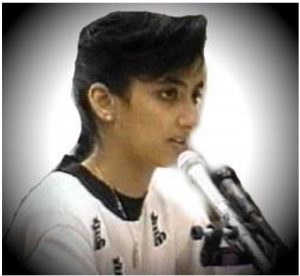








 white helmets very much armed!
white helmets very much armed!

















 FIRST FULL SCALE OPERATION AGAINST LTTE IN 1987
FIRST FULL SCALE OPERATION AGAINST LTTE IN 1987

